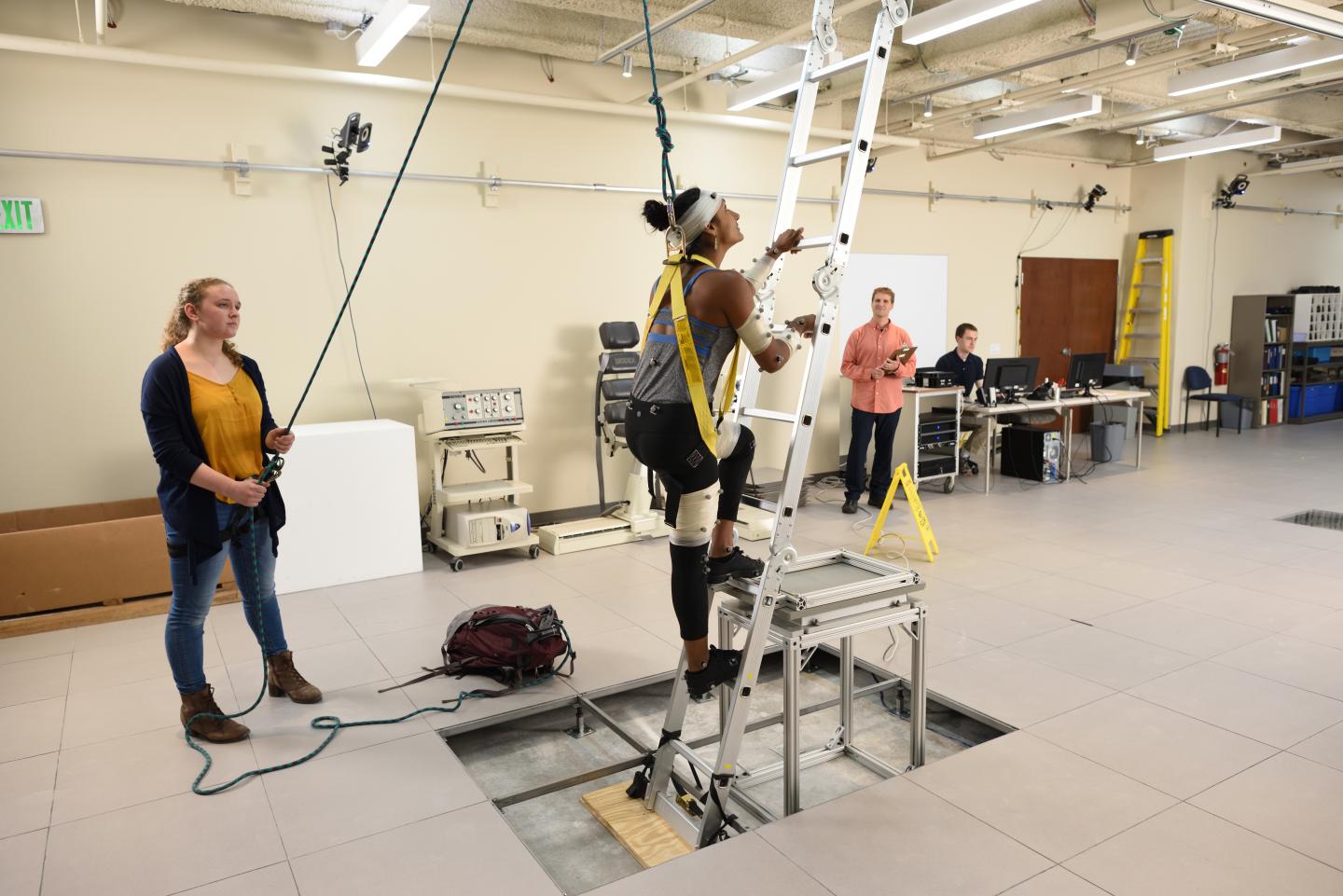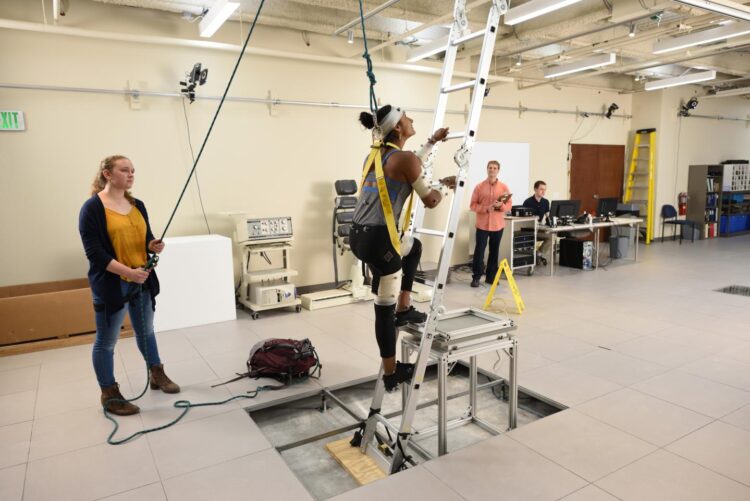Kurt Beschorner receives a $1.8M NIOSH grant to develop safer ladder design and climbing practices

Credit: Ric Evans/University of Pittsburgh
PITTSBURGH (August 11, 2020) … When using a ladder, whether you are a professional roofer or an everyday homeowner, safety should always be the first step.
There is an estimated $24 billion annual cost of ladder injuries in the U.S., where falls account for 26 percent of nonfatal and 16 percent of fatal workplace injuries. When the fall is not fatal, it often leads to serious injury, and workers who experience a ladder-related fall have a median time of 20 days away from work.
Losing one’s footing is a common accident and can lead to serious injury; yet, research on falls from ladders is lacking.
The University of Pittsburgh’s Kurt Beschorner will use a $1,840,869 grant from the National Institute for Occupational Safety and Health (NIOSH) to develop safer ladder designs and individual risk factors of ladder falls. The work will focus on measuring friction as the pathway for the ladder and individual to influence slip and fall risk.
“A slip happens when there is insufficient friction between the shoe surface and ladder rung, but little is known about how ladder design or an individual’s body affects slip and fall risk,” said Beschorner, associate professor of bioengineering at Pitt’s Swanson School of Engineering.
Previous award-winning work from students Erika Pliner and Ellen Martin in the Human Movement & Balance Laboratory provided foundational understanding on ladder fall risk factors. Some groups at increased risk are older adults, inexperienced climbers, and people with lower body strength. The researchers will build on these preliminary findings with this larger study.
The lab will use two measurements to determine the impact of ladder design and individual factors on slip and fall risk: required friction and available friction.
“The available friction is the amount that occurs between a shoe and rung,” Beschorner explained. “When that value is less than the amount of friction that is required to complete a task, there is a risk of a slip-and-fall event.”
To measure the required friction, the research group will install force plate technology onto rungs and build a ladder around it. They will combine force data with motion data to better understand how various factors affect slips and falls.
For the available friction, they will use a device that simulates a slip under controlled conditions and measure how much friction is generated. They will create a slippery rung scenario with a harnessed participant to test whether an individual slips under these specific conditions.
“While falls are dangerous occupationally, ladders are also a consumer product, and accidents at home contribute to the annual number of injuries and fatalities,” said Beschorner.
“This award gives us an opportunity to develop a mechanistic model to see how these individual factors influence fall risk,” he continued. “We will study these measurements of friction and how they relate to slipping in order to establish safety guidelines, which will hopefully lead to a significant reduction in severe injuries and fatalities in both the workplace and at home.”
This study will extend the lab’s prior work on friction between shoes and walking surfaces to ladder slipping.
Media Contact
Leah Russell
[email protected]
Original Source
https:/






